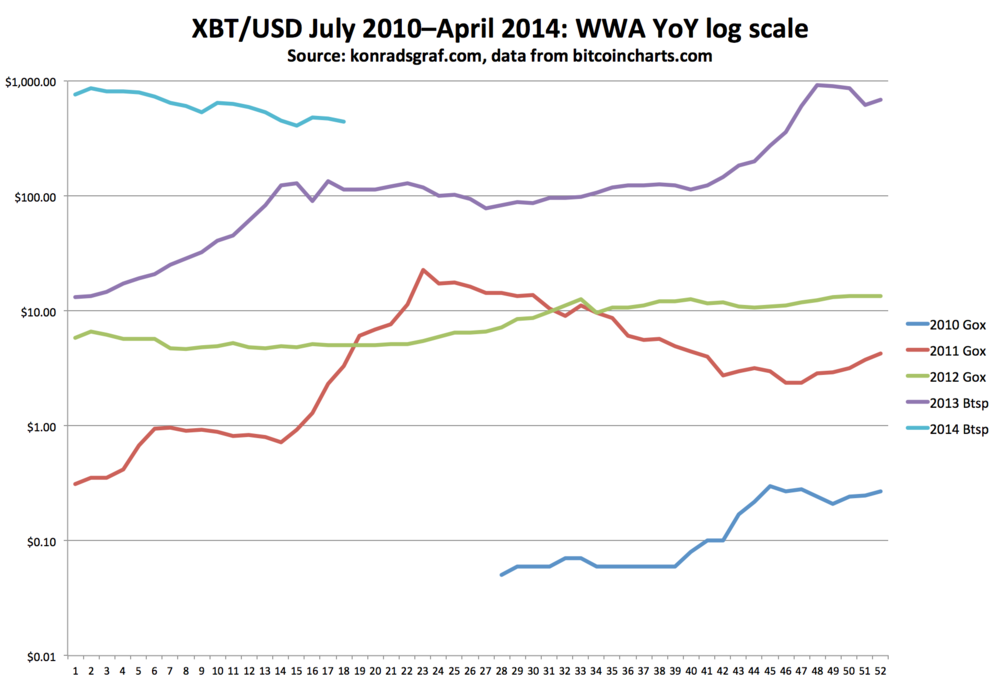Only the faster profits: A powerful health measure and why it is unadvertised
/My journey in nutrition science studies and personal nutrition practice over about the past six years has been characterized by “punctuated equilibrium,” long periods of stability, with minor updates from my readings and small alterations to practice. But every couple of years, it seems, such equilibrium is slammed into a rather different shape over just a few days.
What follows is about a book that just did this. It has not overturned anything I was doing before, but has lifted my understanding and led me to try some important practice modifications.
Dr. Jason Fung has produced a new book that is vitally important, well written, argued from the highest quality available evidence, and not lacking in careful doses of wit and humor. This is not just another weight to further depress already strained diet-section bookshelves, it is a brilliant yet concise scientific integration delivered so that a general audience can also benefit directly.
The Obesity Code (March 2016; foreword by the legendary Professor Tim Noakes) states, and largely follows through on, a preference for rigorous controlled human trials over the kinds of associational, epidemiological, and often scientifically weak “studies” (sometimes of a few rats) that typically grab headlines with hyped and unwarranted inferences. The book's central theory does what a good scientific theory should. It explains all the relevant high-quality evidence in a systematic, logical, and accessible way. It also addresses the oversupply of low-quality evidence and non-evidence that leads astray. For hardcore readers, the endnotes run 32 pages, no small proportion of which are research journal citations.
Context: Before I read this book
In October 2010, my long-term general interest in healthful nutrition jumped to the next level when I read The Primal Blueprint by Mark Sisson. This kicked off some major personal changes and a side quest to read in nutrition and exercise science to examine controversies with practical implications for what I decide to do in my daily life.
The intellectual side of this journey included Good Calories, Bad Calories (2007) and Why We Get Fat (2011) by Gary Taubes; numerous books and articles by Robb Wolf, Loren Cordain, and others; biochemical metabolism research; and evolutionary health reasoning and related paleo-archeological controversies.
The next major step came in 2013, when I shifted to a ketogenic approach based on the work of Jeff Volek and Stephen Phinney, two career researchers and pioneering experts on nutritional ketosis and exercise performance. Compared to the Primal Blueprint framework recommendations, this entails reducing daily carbs further to under 20g and increasing natural fats to replace that sugar energy while maintaining moderate protein. This is often labeled “low-carb, high-fat, and moderate protein,” or LCHF. This is not your cringeworthy ketogenic lab-chow from classical research and medical use. It is all quite real food.
To assemble my own thoughts from such widely varied sources of research, inspiration, and practice, I created a webpage called Evolutionary Health. There I summarize the current state of my views and link to standout resources. I update this from time to time with information new to me, and refinements of my working synthesis. That page includes material on food production and environment, particularly desertification. It now includes multiple references to Fung’s work.
Until now, if asked what to read for ways to improve health through nutrition, my top starter book recommendations have been The Primal Blueprint, mentioned above, and The Art and Science of Low Carbohydrate Living (2011) and The Art and Science of Low Carbohydrate Performance (2012) by Volek and Phinney. I then recommend The Big Fat Surprise (2014) by Nina Teicholz, another great contributor in the tradition of Taubes—exposing the modern nutrition emperors to be shockingly underdressed. This adds a larger scientific and historical context, including how modern conventional wisdom on nutrition has been formed: far more by politics, loose intuition, and charisma than by legitimate scientific evidence.
Now, however, I might start people right off with The Obesity Code.
Pinpointing the root of metabolic syndrome
What causes obesity? What are the best weight control practices? Everybody thinks they know the answer. Fung demonstrates that this “everybody,” such as it is, remains quite confused.
The book presents a single central theory of overweight. While this extends to diabetes and metabolic syndrome more generally, the book focuses on overweight as the epicenter of the modern long-term degenerative symptom cluster. It argues that the central underlying phenomenon in obesity is insulin resistance. Successful treatments, especially if they are to have lasting healthy effects, must lower insulin resistance.
Insulin resistance is analogous to drug tolerance. The more of a drug one has taken over a longer period, the higher the dose needed for a similar effect. Likewise, the more time the body must swim in evolutionarily novel quantities of insulin, the more likely it is to up resistance. Such resistance is also stubborn; it rises much more easily than it falls. A self-reinforcing pattern of elevated insulin and elevated resistance begins. When insulin-producing beta cells can no longer keep up in this death race and begin to fail, we call that “type 2 diabetes.” The conventional treatment? Just inject more insulin; the race must go on. But the patient keeps deteriorating.
Genetic differences and age both impact individual insulin resistance response. This helps explain wide variations among people eating similarly and for the same person at different ages. This insight rescues a too-simple carbohydrate-obesity theory from the obvious rebuttal: just point to some carb-eating thin people. The book also emphasizes the better-known distinction between the effects of carbs in natural forms versus those in modern processed and refined forms.
But first, how did we get here and why are we still here?
It would be relatively simple to explain some measures to lower insulin resistance, such as some of those practiced at Fung’s Intensive Dietary Management program. However, the complication he faces, and faces up to squarely in this book, is that entire industries, bodies of officialdom and authority, and entrenched conventional wisdom all combine to promote and sell methods that either do not reduce insulin resistance, or raise it still further. Treating advanced type 2 diabetes with insulin injections is partly comparable to treating an advanced alcoholic with a steady rotgut supply. It patches some symptoms, even as it gradually worsens the condition and leads to further deterioration.
Official bodies and industry interest groups have pushed failing methods and theories relentlessly for decades (whether intentionally or unknowingly does not change the outcomes). Massive failures to promote health never dissuade; more of the same is always their answer. Some “success,” however, is still visible. It shows up in untold billions on the income statements of 1) ag and food companies selling profitable processed products that gradually sicken people and 2) pharma and healthcare organizations producing products and services to treat the resulting chronic degenerative symptoms, mostly without addressing causes. With causes untreated and the sick getting sicker, the massive sums involved not only keep flowing, but keep expanding.
The book must therefore also take the time to expose and refute common, widely accepted, well-funded, officially promoted, and dead wrong claims and practices. In each case, it demonstrates how the highest quality available evidence, common experience, and logic show that conventional weight management methods fail—and that they fail is probably the best that can be said of them.
Don’t just do something, stop
The book’s most important practice implication is less about food and more about the need for its periodic absence. In health, politics, and some other fields, people tend to respond to serious problems with a somewhat desperate “just do something” attitude. But the most helpful measure might instead be to stop doing something. Rather than “solving” a problem, what may be required is to stop creating its causes. In this case, if there is too much eating too often, stop doing it. And there’s a word for that—fasting.
A fasting period is nothing more than the time between eating sessions. Longer pauses can begin to take on names such as intermittent fasting (IF) and still longer pauses just fasting. So in this sense everyone fasts already, Fung reassures. The variation is in how long and how often. Fasting’s true opposite, it comes to appear, is frequent snacking.
Fung notes that fasting has been promoted and practiced through cultural traditions the world over for thousands of years (That, I would add, might mostly just reflect the duration of available records). Fasting has been promoted for health, clarity of mind, and spiritual refinement, often carried through religious practice traditions.
He also does not shy away from explaining that fasting and IF are unique in important ways from a politico-economic standpoint. The person who fasts benefits substantially, but his corresponding cost for this is better than zero. He saves both money and time. He gains freedom through reduced frequency of buying food, preparing it, eating it, and cleaning up, which can add up to large blocks of time and attention.
For example, I have moved mainly to a 23-hour daily fast framework for now (with occasionally longer stretches as well). This simply means eating one meal a day during an approximately one-hour period. Simple as can be. I may next try alternate-day fasting (eating normally one day and not at all the next day) to compare the effects. The latter pattern has been commonly employed in research trials.
The implication is that no one else besides the person fasting stands to profit from it. Only the faster profits. No pharma company sells more of its drug (some may sell less). No food company sells more of any boxed creation (some may sell less). No elaborate diets must be studied and followed, no calorie counting apps employed, no juicing machine bought and fed with plant carcasses, no special shopping list assembled, no exotic ingredients ordered online.
Of course, Fung, a practicing physician and kidney specialist, is careful to warn that at minimum those already on metabolic medications, foremost insulin, must work closely with a physician. This may entail careful adjustments, which should be done only under proper supervision. Significantly low blood sugar is a particularly dangerous condition that can follow from mis-coordination of drug dosages with current health state and eating patterns.
Fasting versus calorie reduction
This book clarifies that just “eating less,” as a method, does not deliver the positive effects of fasting; it has opposite effects on the relevant all-important regulatory hormones. Under calorie reduction, metabolism drops to compensate for the stable lower-energy environment. Metabolic rate then stays lower long afterwards, which explains both stalling progress and later regain.
With true fasting, however, metabolism either stays level or increases. This seems congruent from an evolutionary standpoint. A few days of bad hunting (no food at all) means it is time to get out there and hunt, and do it more effectively than before. Sitting in the cave and getting cold, moody, and depressed is not going to help.
Likewise, the book recommends eating normally (though ideally also low carb) when one does eat. That means not being hungry after the meal, as can happen under conscious calorie-cutting methods. Readjusting the modern unnaturally feasting-heavy “feast and famine” balance away from too much feasting should not, in this view, entail skipping the feasting parts altogether, just extending the fasting phases.
The author emphasizes the distinction between lowering insulin and reducing insulin resistance. Just lowering insulin by changing food content might help, but might not always be enough to fully reverse an existing condition. Chronically high insulin is among the causes of elevated insulin resistance, but influencing insulin resistance itself must remain the real prize. A focus on insulin, per se, then is one way to get off track, a false summit.
The book discusses effects on lean mass. The trial research again shows that fasting has important effects that are opposite to those of calorie reduction within conventional meal timing patterns. It is calorie reduction that leads to lean wasting (“starvation mode”), while fasting does not. Fasting stimulates junk protein breakdown for recycling as well as human growth hormone release, a build-oriented combination. A steady calorie reduction program never gets around to these things. All the way down to actual severe starvation, it never generates the hormonal, metabolic, and cognitive benefits of fasting.
Some other nods to tradition
The book also mentions how certain traditional practices hold up well when judged against the insulin-resistance theory. Eating together at mealtimes, and not in between, automatically sets up longer fasting periods. This is just the opposite of the frequent eating and snacking practices that snack sellers push.
Likewise, widespread traditional uses of vinegar and fermented foods are given a nod based on experimental evidence that vinegar moderates insulin response. For example, the penchant for Japanese cuisine to combine rice with pickles and to make sushi (vinegar-soaked rice) likely affords some protection from rice’s insulin spiking characteristics.
Such factors may help further clarify the “Asian rice paradox.” A simple carbohydrate-obesity theory struggles to explain why East Asians eating large amounts of rice did not become obese in the 20th century. Traditional eating patterns, activity patterns, and food combinations may well all have contributed. Genetic influences on insulin resistance are also possible contributors.
More recently, however, these same populations have started gaining weight, and diabetes is on the rise. This coincides with increased consumption of sugar, flour, and other processed foods, greater fast food intake, more sedentary occupations, and a snacking culture that can spread with processed snack food marketing and distribution. Not only do snack foods (and with them snacking) tend to shorten traditional fasting periods, but most of these items are made almost exclusively from insulogenic processed derivatives of cheap (and often government subsidized) agricultural grain crops, foremost sugar, wheat, and corn.
Optimization, and the final defeat of the “thermodynamics” refrain
For established low-carbers still not entirely happy with their body compositions and looking for more optimization (like me), Fung argues that while LCHF is a powerful approach, it is not the most powerful one. Each food, except perhaps pure refined fat, generates some insulin response, though this varies depending on the food. Regardless, there is no way to beat fasting at getting insulin down to rock bottom and keeping it there for long stretches, providing an environment in which insulin resistance can also gradually sink.
It is insulin resistance, Fung argues, that directs the body’s fat storage “set point,” the fat composition level the body fights to keep and return toward. In any long-running war against a conscious, conventional “eat less; exercise more” strategy, the body’s homeostatic set point always wins. Cutting calories can appear to win a few battles, but this cannot last. Calorie cutting, depending on what is actually eaten in a given program, can also sooner or later lead to weakness and gradually advancing malnutrition. Worse, the stress of being regularly hungry, cold, and malnourished can backfire further by raising stress hormones—which also stimulate insulin.
The way forward is to address the set point itself, and that means modifying insulin resistance. With this, Fung establishes why and how attempts to reduce weight by merely lowering calories within existing meal patterns fail in the long run, ending in regain, often to a level above the starting weight.
And as for the ever-reliable “but, it’s all just thermodynamics” refrain, which insists that weight control is nothing more than regulating calories in and calories out as in a lab beaker, it is true that caloric balance does change with weight loss following from fasting. However, that change is an effect, not a method. Fung demonstrates how and why methods with long-term success must treat the chronic hormonal condition of insulin resistance. Doing so allows the body’s fat storage set point to fall back to a more natural level to which the body then happily self-regulates.
This means that sustainable changes to caloric balance follow from a set point change but do not necessarily cause it, contra standard advice. The body has far more tricks to fight back with than consciously calorie-cutting dieters can possibly overcome for long. The more they fight using the usual failing methods, the stronger the body’s countermeasures become. Thus, seemingly unassailable advice to “just eat less,” offered as a method for change, is worse than useless. And as Taubes had also argued in Why We Get Fat, naive misapplication of a simple physics concept to a complex homeostatic system serves only to support blaming obesity victims on the basis of scientifically unteathered and even primitively moralizing causal theories.
Could be better combined with LCHF literature
Something emphasized in the LCHF literature, but less so in this book, is that being in nutritional ketosis is already a quasi-fasting state compared to the common contemporary glycolytic (“carb burning”) state. It is far easier for those already in nutritional ketosis to simply not bother eating at times. They can start and continue fasting while hardly noticing, especially when compared to typical carb burners in pursuit of their next glucose fix.
People in a dominant glycolytic state transitioning to either nutritional ketosis or to fasting (fasting ketosis) can each report some similar transitional symptoms and discomforts such as headaches and low energy. People already in a dominant lipolytic (“fat burning”) state, however, have only to go from nutritional ketosis to fasting ketosis, a far milder transition. Mainly advising fasting for people coming right from a conventional diet could run them into challenges. Starting with nutritional ketosis makes fasting easier.
But beginning either practice still tends to require an initial transition. In favor of a fasting-first approach, fasting is much simpler to execute and monitor. It just involves not doing something. Changing the content of one’s habitual diet entails more ongoing decisions, leaving more room for errors and subtle program regressions.
On balance, both LCHF and fasting are important and mutually reinforcing. Either could come first or they could be adopted together. There are various pros and cons in emphasizing one or the other to newcomers, a question mainly of strategy and practical experience.
An integrative milestone
This book has enabled me to take what information and practices I had already filed away as solid and useful, and revise that totality into a better-integrated picture. This helps me better harmonize contributions from several schools of thought within the broadly defined evolutionary nutrition movement. Fung suggests that some sub-groups that tend to engage in in-fighting are probably just each right about their own particular puzzle piece. Now we get a clearer look at the frame photo for that whole puzzle at a single glance.
Perhaps the most encouraging message from this book is that, unlike basically every “diet” strategy, there is good reason in existing high-grade research not to expect regain from a fasting approach. Fasting and LCHF to target insulin resistance are quite distinct from the many conscious caloric balance variants that have failed long-term so consistently and so epically for decades. In addition, evidence is also accumulating to indicate likely protective, and especially preventative, effects of fasting on other “diseases of civilization,” including neurodegenerative cognitive conditions, heart disease, and cancer.
We can try to fight the body’s fat composition set point without changing it—and many, many have—but only at great cost and effort and with a near guarantee of long-term failure. A few battles may be won, but the war’s outcome is already clear. The set point wins. Conventional calorie restriction does change the set point—it raises it! This makes apparent temporary successes from calorie-reduction programs Pyrrhic victories.
Armed with methods that can lower the set point instead, we can finally get our bodies and ourselves back on the same side. This is the central message of this brilliant, heroic, and accessible book in a field of crucial importance to human well-being.









